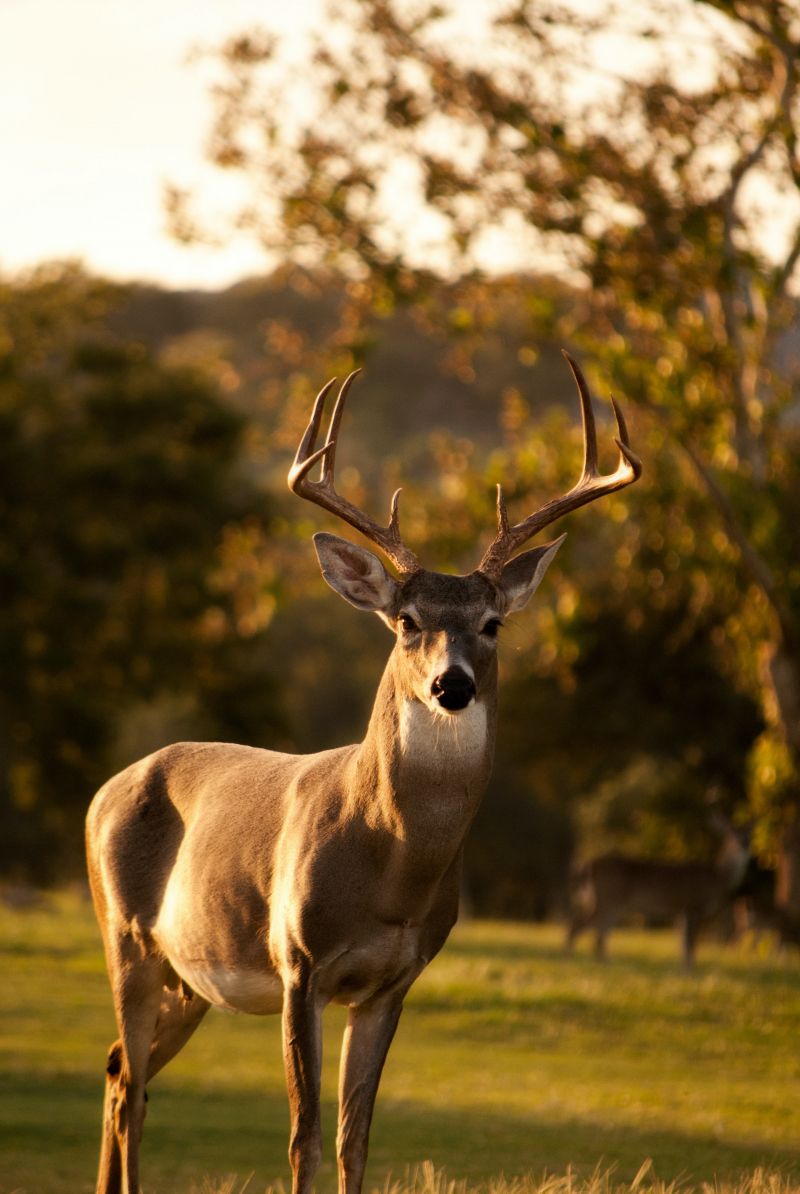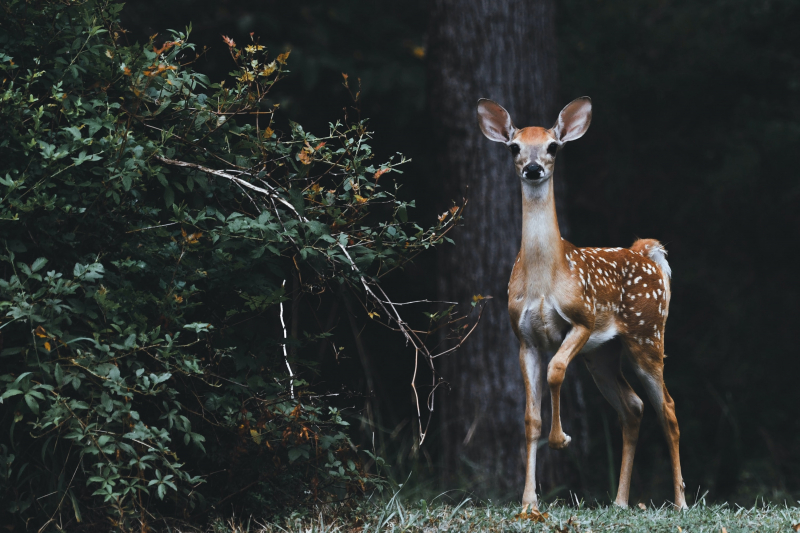Deer
Deer, belonging to the family Cervidae, are graceful and herbivorous mammals widely recognized for their iconic antlers and slender bodies. Representing a diverse group of species, deer are found across various ecosystems worldwide, from dense forests to open grasslands. These creatures hold cultural significance, are admired for their beauty, and play crucial roles in shaping ecosystems.
Characterized by their long legs, slender bodies, and cloven hooves, deer are well-adapted to a herbivorous lifestyle. The males, or bucks, are often distinguished by their antlers, which are grown and shed annually. Antlers are used primarily for intra-species competition during the breeding season and are shed afterward, regrowing in a cyclical pattern. Females, or does, generally lack antlers.
Deer exhibit a wide range of sizes and colors depending on the species. The white-tailed deer, for example, is named for the distinctive white underside of its tail, which it flashes as an alarm signal when sensing danger. Other species, like the mule deer, have large, mule-like ears and a darker coat. The reindeer, or caribou, is adapted to colder climates, featuring thick fur and wide, concave hooves for traversing snowy landscapes.
One of the most notable behaviors in deer is their seasonal migration. In response to changing weather conditions and availability of food, deer may undertake long-distance movements between their summer and winter ranges. This behavior is particularly well-documented in species like the caribou, which undergo extensive migrations to find suitable forage throughout the year.
Deer play essential roles in their ecosystems as herbivores, influencing vegetation dynamics and contributing to seed dispersal. They are selective grazers, consuming a variety of plant species, and their foraging activities can shape the composition of plant communities. In turn, deer are prey for a variety of predators, including wolves, mountain lions, and humans.
The relationship between deer and humans has historical and cultural significance. In many cultures, deer are symbols of grace, gentleness, and the cycle of nature. They are also valued for their meat, hides, and antlers. However, human activities, such as habitat destruction, hunting, and vehicle collisions, can pose significant threats to deer populations.

















